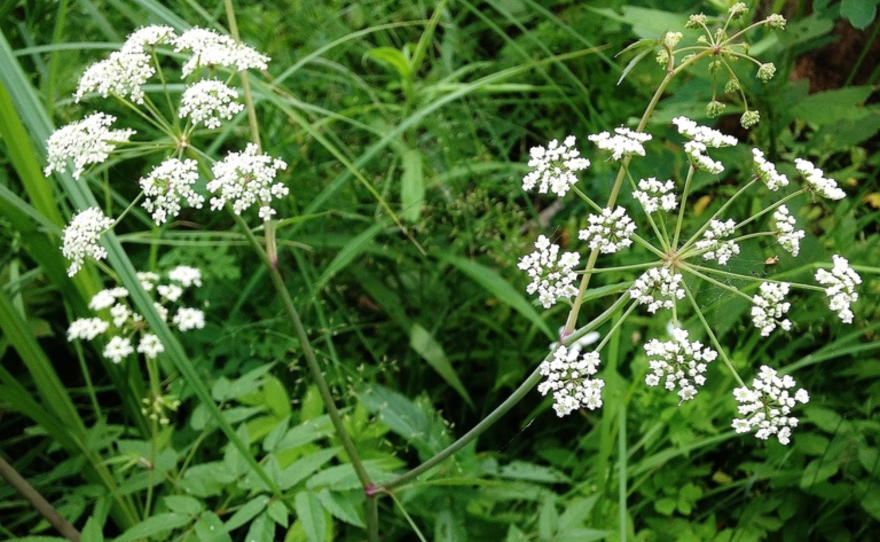Foragers, toddlers, and plant-eating pets beware: Minnesota hosts the most poisonous plant in North America, the water hemlock.
Luckily, the plant poses little threat to most folks: it won’t chase you down, bite you, or steal your lunch money. If you leave it alone, you’ll be just fine!
However, the range of the plant is expanding, and it’s certainly helpful to know how to identify it. Here’s a quick guide:

- Only found in wet areas
- Blooms July-August
- Large, flat clusters of white flowers up to 6 inches across
- 3-6 feet tall
- For a positive ID, check the leaves, which are somewhat toothed on the edges. If the leaf veins end at the tip of the tooth, it’s not a water hemlock; if the leaf vein ends within the notch between teeth, it is.
For the most part, it’s perfectly safe to ignore any plants you might find nearby, and our native pollinators will thank you for the extra food and shelter.
However, if the plant is growing in an undesired area (where you mow, for example, or if you have young kids or pets), it’s best to remove them. Wear long pants, closed-toe shoes, a long-sleeved shirt, and be sure to use gloves; even skin exposure can be toxic. Once removed, you can burn the plants (but don’t breathe the smoke).
Stay safe out there!
Topics
Introduction (0:00-0:23)
Yellow flowers (0:23-6:21)
Blue flowers (6:21-7:06)
Pink flowers (7:06-8:46)
White flowers (8:46-15:18)
Water hemlock (10:21-15:18)
Conclusion (15:28-16:39)
What have you seen out there? Let us know: email us at comments@kaxe.org or text us at 218-326-1234.
That does it for this week! For more phenology, <b>subscribe</b> to our Season Watch Newsletter or visit the Season Watch Facebook page.
Funding for this project was provided by the Minnesota Environment and Natural Resources Trust Fund as recommended by the Legislative-Citizen Commission on Minnesota Resources (LCCMR).







